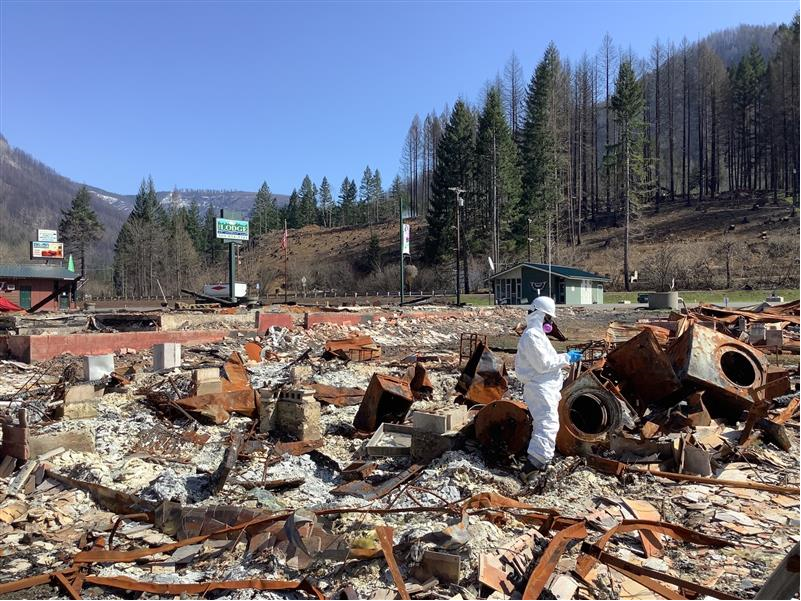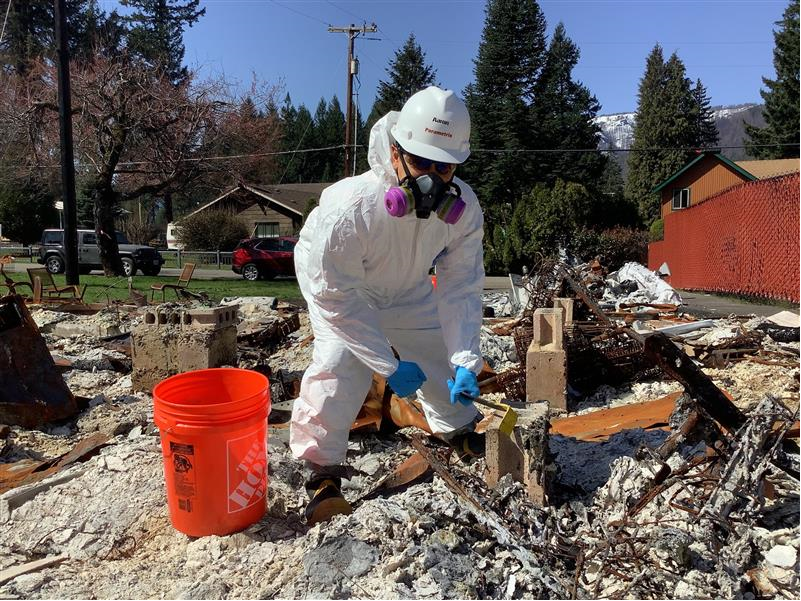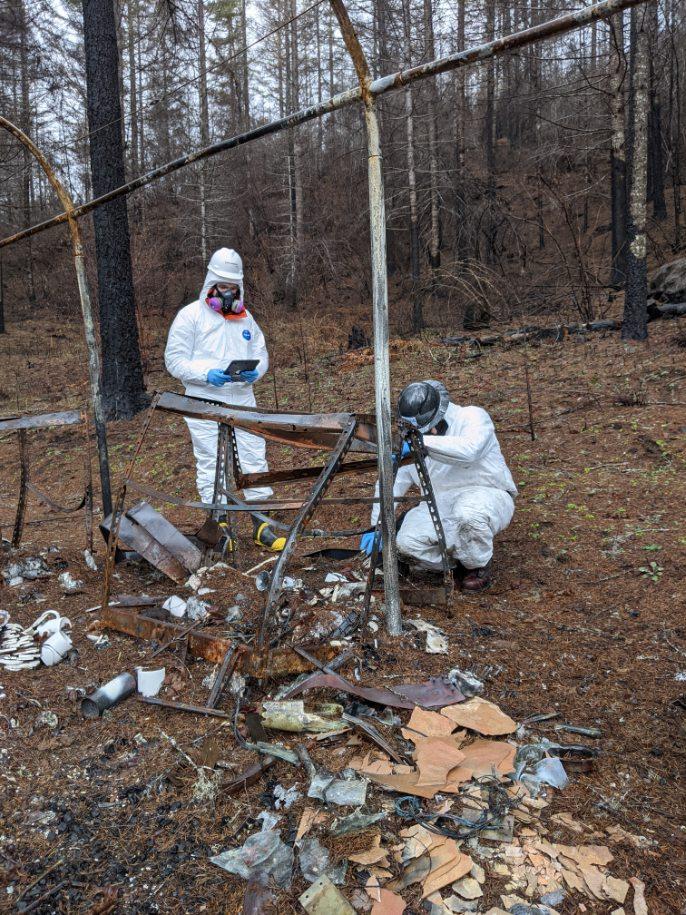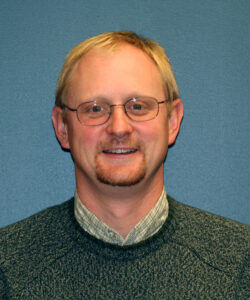By Richard Roché
Oregon’s 2020 Labor Day fires were the largest and most expensive disaster in the state’s history, burning over 1 million acres and destroying over 5,000 structures. Initial estimates put the debris cleanup at over $600 million, including $326 million for ash and debris removal and $295 million to remove hazard trees.

Parametrix employee-owners are working alongside Maul Foster & Alongi and CDR Maguire staff in eight affected counties to clear residential and commercial sites of asbestos and soil contamination. The testing is done free of charge to property owners. After crews remove ash and debris and the soil is deemed safe, property owners can start the long process of rebuilding their home.
The overall effort is being led by the Oregon Department of Transportation. The work paves the way for rebuilding efforts, community recovery, and helps revitalize Oregon’s economy.

Six Parametrix employee-owners from Oregon and the Puget Sound region have spent the last four months completing field work on this project, often working 60+ hours a week to help get residential sites cleared so people can start to put their lives back together. Our field team has included Ingmar Saul, Garrett Augustyn, Don Francis, Matt Murphy, Aaron Thom, and Luc Friedenfels, supported by Elizabeth Belanger, Emily McKernan, Kassie Winters, and Lora Crackenberger.
Two of those field team members shared their stories.

Matt Murphy is an environmental scientist based out of our Seattle office. He is serving as the Site Safety Officer for the asbestos surveys on the Holiday Farm Fire outside of Eugene, OR. He has been on this job since February and is currently staying in an Airbnb in Eugene with his wife and husky.
He says, “working on the wildfire debris removal team has a been a great experience. The opportunity to be a part of this large field effort has been rewarding, knowing that the work we are doing is directly helping the community rebuild and get back to normalcy. There is definitely a sense of fulfillment knowing that the effort we have put into this project is directly helping community members restart their lives.

In his role, Matt has had the opportunity to speak directly to impacted homeowners. He says, “What this community has endured is brutal. It is sad to hear the stories and hear the loss, but everyone I have talked to has rolled their sleeves up to help a neighbor, friend, or loved one to get back on track and all have come from a deep standing of gratitude and thankfulness. This community has a lot of grit and kindness and I am glad to have experienced a small piece of it.”
Matt is working with a team of subconsultants that includes staff from Washington, California, and Oregon.

Ingmar Saul, a hydrogeologist based out of our Portland office, has been working at the site of the Alameda fires in Medford, OR since January. He drives down from Portland every Sunday and is there until Friday, working Saturdays on occasion as well. He recounts his first day he was at the project site to do asbestos sampling, “coming into a mobile home park that had 160 mobile homes and there’s nothing left but steel and ash. This is all that’s left of peoples’ livelihood. No photos, no wedding dress hanging in the closet, and no memorabilia left. That was everything they had and there’s nothing left. It’s really sad to see.”
In total, over 2,000 structures were destroyed in the Alameda fires, including businesses, houses, and many mobile home parks, which is where Ingmar has spent most of his time on this project.
Asbestos surveys must be done first to know whether a specialized team must come in to do the cleanup. After that, soil samples are taken to ensure metals have been removed.
Ingmar says this is his first time working on a project quite like this in his nearly 30 years of experience.
The work sometimes involves speaking directly with the landowners to communicate schedules. After over 6 months many of them have come to grips with their losses. “There are no words I can say to help ease their pain that they went through,” said Ingmar.
He anticipates he’ll remain on this job through the summer, but for the home and business owners, the work can’t be completed fast enough.

